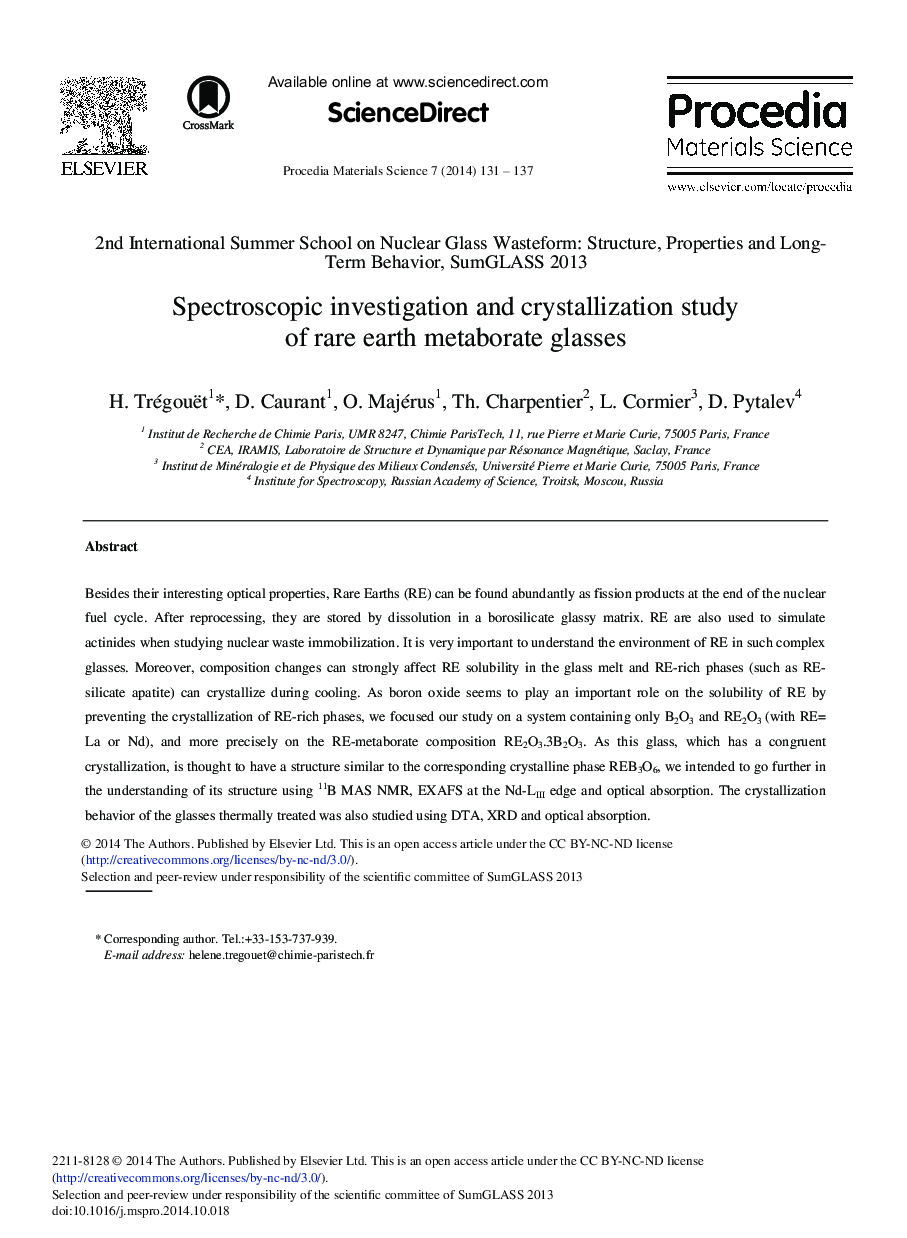| Article ID | Journal | Published Year | Pages | File Type |
|---|---|---|---|---|
| 1634233 | Procedia Materials Science | 2014 | 7 Pages |
Besides their interesting optical properties, Rare Earths (RE) can be found abundantly as fission products at the end of the nuclear fuel cycle. After reprocessing, they are stored by dissolution in a borosilicate glassy matrix. RE are also used to simulate actinides when studying nuclear waste immobilization. It is very important to understand the environment of RE in such complex glasses. Moreover, composition changes can strongly affect RE solubility in the glass melt and RE-rich phases (such as RE- silicate apatite) can crystallize during cooling. As boron oxide seems to play an important role on the solubility of RE by preventing the crystallization of RE-rich phases, we focused our study on a system containing only B2O3 and RE2O3 (with RE= La or Nd), and more precisely on the RE-metaborate composition RE2O3.3B2O3. As this glass, which has a congruent crystallization, is thought to have a structure similar to the corresponding crystalline phase REB3O6, we intended to go further in the understanding of its structure using 11B MAS NMR, EXAFS at the Nd-LIII edge and optical absorption. The crystallization behavior of the glasses thermally treated was also studied using DTA, XRD and optical absorption.
